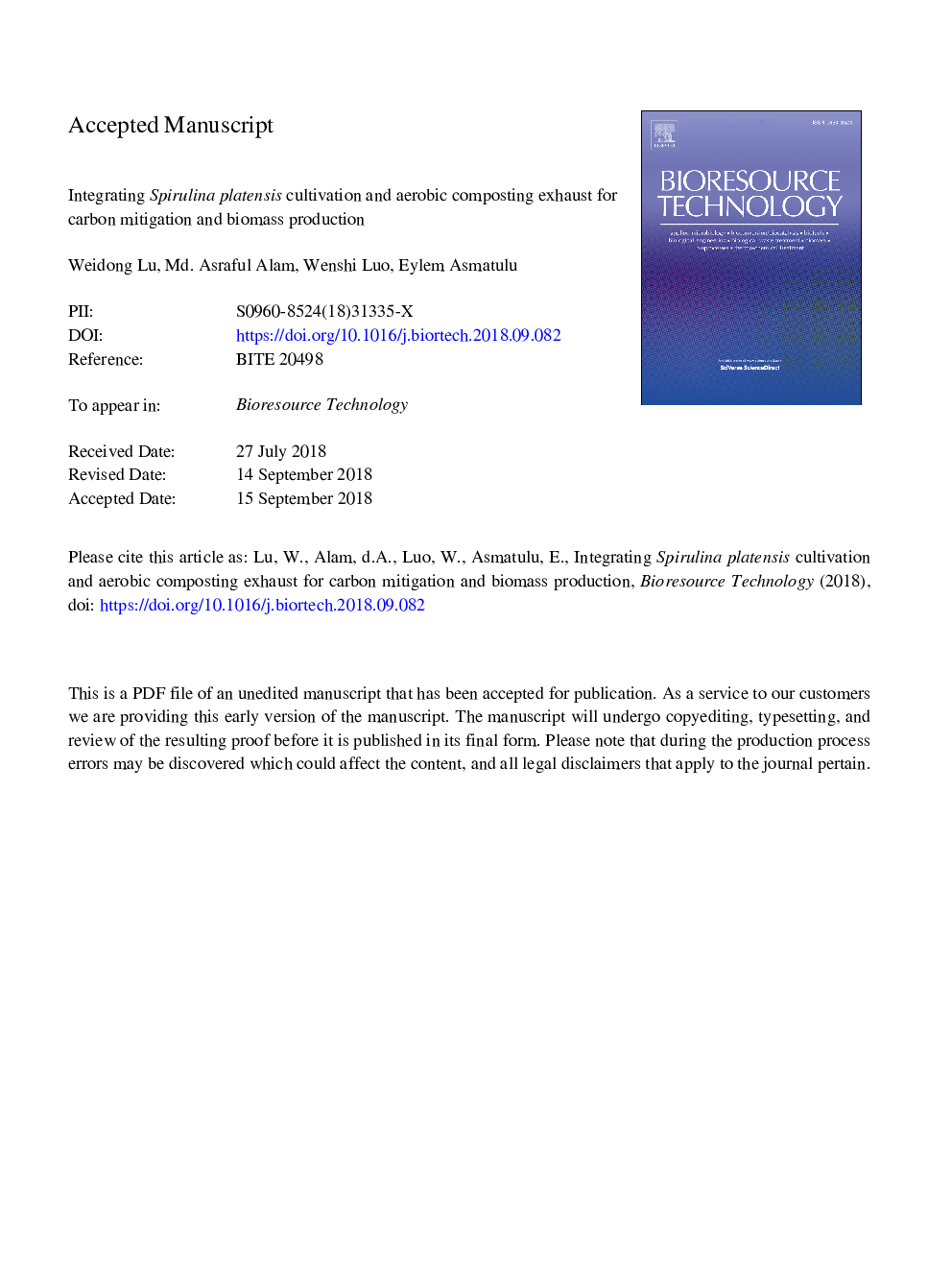| Article ID | Journal | Published Year | Pages | File Type |
|---|---|---|---|---|
| 10226162 | Bioresource Technology | 2019 | 36 Pages |
Abstract
Aerobic composting is an effective way to dispose of organic waste. However, considerable carbon is converted into CO2 and emitted into the atmosphere, which is a waste of the carbon resource and has the potential for the greenhouse gas effect. In this study, an innovative approach coupling aerobic composting exhaust and Spirulina platensis cultivation has been proposed and investigated, resulting in a double-edged solution to mitigating waste and co-generating biomass with a minimal cost of CO2 supplied in the culture. Experimental results showed that the maximum biomass productivity ranged from 56.61 to 58.38â¯mg·Lâ1·dayâ1 was achieved using aerobic composting exhaust as a carbon source. Moreover, the CO2 fixation rates of 46.36â¯mg·Lâ1·dayâ1 and 76.81â¯mg·Lâ1·dayâ1 were obtained by S. platensis cultivation. Finally, the chemical composition analysis of S. platensis biomass obtained in an optimum condition showed an abundance of proteins and lipids, thereby indicating its great potential for biofuel industry.
Related Topics
Physical Sciences and Engineering
Chemical Engineering
Process Chemistry and Technology
Authors
Weidong Lu, Md. Asraful Alam, Wenshi Luo, Eylem Asmatulu,
